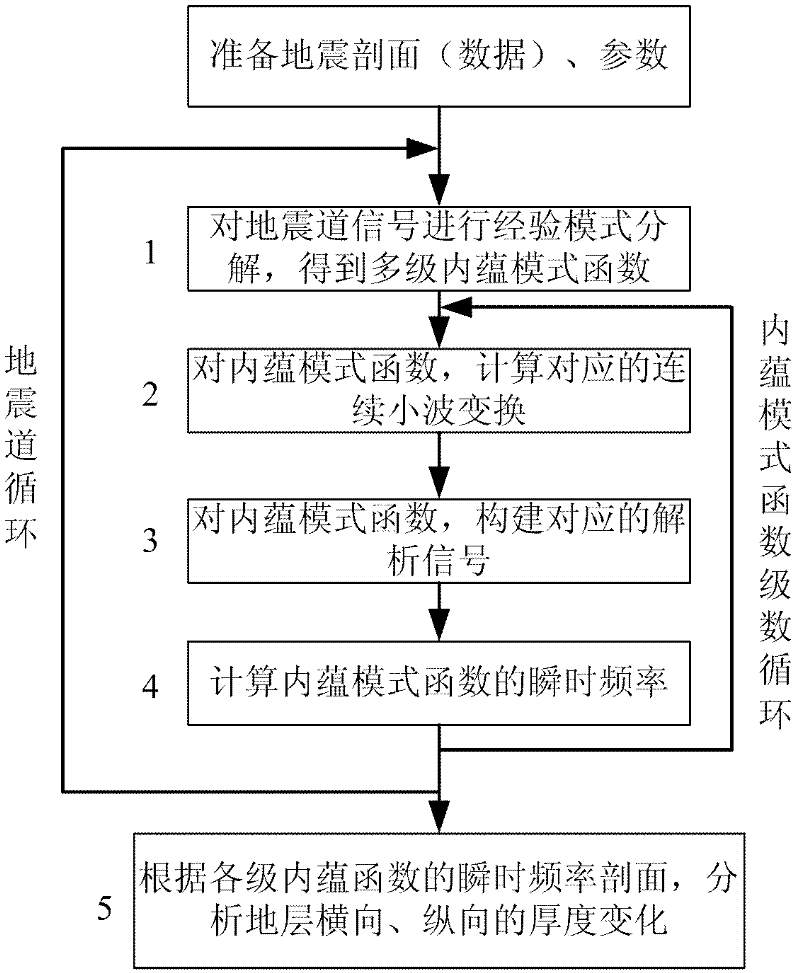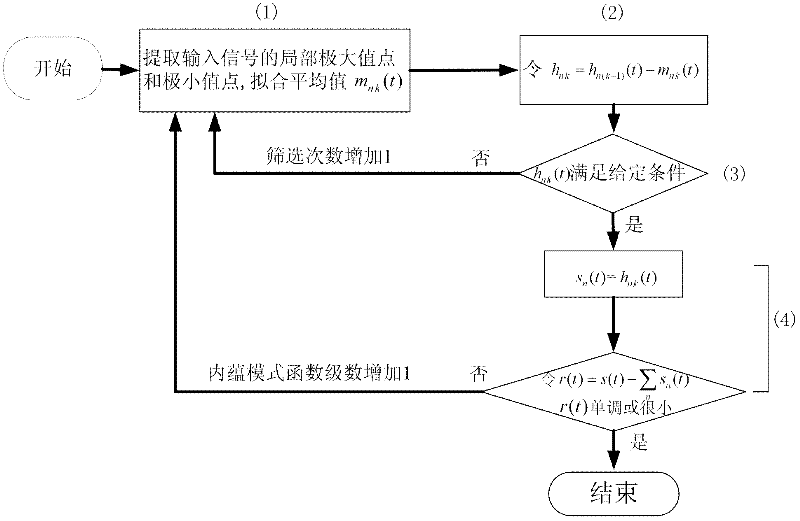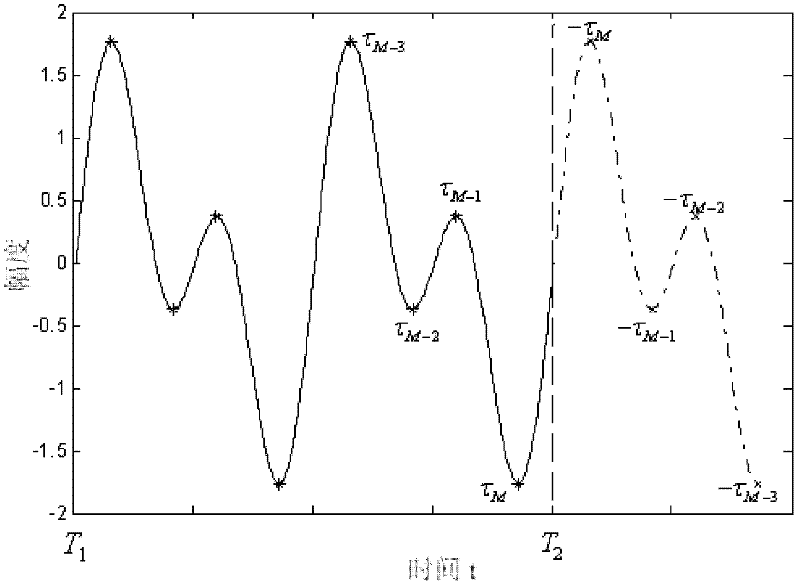Earthquake stratum thickness variation analysis method
A technology of thickness change and analysis method, which is applied in seismic signal processing and other directions, can solve the problems that it is difficult to judge the thickness change of thin interbedded structures, the results of empirical model decomposition have large changes, and the amount of calculation is large.
- Summary
- Abstract
- Description
- Claims
- Application Information
AI Technical Summary
Problems solved by technology
Method used
Image
Examples
Embodiment Construction
[0055] The present invention will be described in further detail below in conjunction with the accompanying drawings and specific embodiments.
[0056] The invention provides a high-resolution seismic formation thickness analysis method based on empirical mode decomposition and instantaneous frequency, which analyzes the change trend of seismic formation thickness according to the instantaneous frequency change of intrinsic mode functions of various levels.
[0057] Such as figure 1 As shown, the seismic formation thickness analysis method provided by the present invention is specifically implemented through the following steps:
[0058] Prepare seismic records, which can be one-dimensional, two-dimensional or three-dimensional seismic records, and repeat steps 1-4 for each seismic signal s(t) of the seismic records:
[0059] Step 1: Carry out empirical mode decomposition on s(t), and decompose it into N-level intrinsic mode functions s n (t), n=1, 2, 3, ... N, in practical ...
PUM
 Login to View More
Login to View More Abstract
Description
Claims
Application Information
 Login to View More
Login to View More - R&D
- Intellectual Property
- Life Sciences
- Materials
- Tech Scout
- Unparalleled Data Quality
- Higher Quality Content
- 60% Fewer Hallucinations
Browse by: Latest US Patents, China's latest patents, Technical Efficacy Thesaurus, Application Domain, Technology Topic, Popular Technical Reports.
© 2025 PatSnap. All rights reserved.Legal|Privacy policy|Modern Slavery Act Transparency Statement|Sitemap|About US| Contact US: help@patsnap.com



